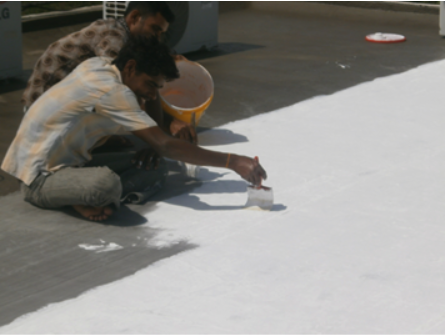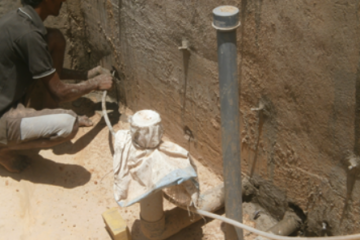

- Membrane Damp proofing: This method basically involves providing layers of membrane of water repellent material between the source of dampness and the part of the structure adjacent to it. This type of layer is commonly known as damp proof course (DPC) and it may comprise of materials like bituminous felts, mastic, asphalt, plastic or polythene sheets, cement concrete, etc. Depending upon the source of dampness, DPC may be provided horizontally or vertically in floors, walls, etc.
- Surface treatments: The surface treatment method consists of filling up the pores of the material exposed to moisture by providing a thin film of water repellent material over the surface (internal / external). External treatment is effective in preventing dampness.
Many surface treatments, like pointing, plastering, painting, distempering etc. are given to the exposed surfaces and also to the internal surface.
- Integral damp-proofing treatments: The integral treatment consists of adding certain compounds to the concrete or mortar during the process of mixing, which when used in construction acts as barriers to moisture penetration under different principles.
- Cavity walls construction: A cavity wall consists of two parallel walls or leaves or skins of masonry separated by a continuous air space or cavity. The provision of continuous cavity in the wall effectively prevents the transmission or percolation of dampness from outer walls or leaf to inner wall or leaf.
- Guniting: This process involves spraying a mix or mortar or concrete to a surface of application with the help of a spray gun and hence it is named as Guniting.
Guniting is a process used in construction for the application of slope stabilization and certain rehabilitation purposes mainly in the construction of retaining walls, swimming pool construction, tunnel construction, in fluid tank construction and some of the concrete repair works.
- Pressure grouting: In this process, a mixture of cement, sand and water is injected under pressure into the cracks, voids or fissures present in the structural component or the ground. In general, the foundations are given this treatment to avoid the moisture penetration.